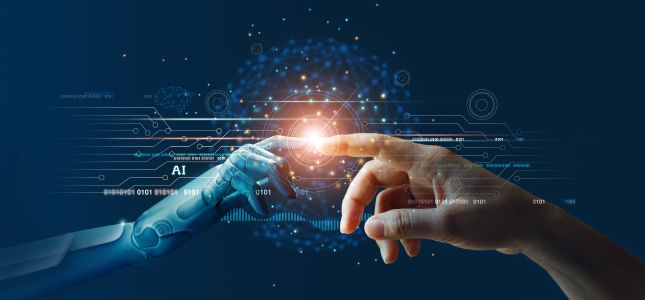As brands strive to offer optimal employee experiences, which in turn lead to better customer experiences, automation is one of the most valuable weapons in their arsenal.
When done well, business process automation (BPA) embraces technology that creates effortless experiences for employees and customers alike, and prepares employees with the tools they need so they’re well-armed and prepared to hit the ground running when volume surges hit. BPA automates various aspects of workflows across an entire organisation, improving the efficiency of the whole process.
Whereas BPA focuses on holistically streamlining work processes, robotic process automation (RPA) and robotic desktop automation (RDA) can help organisations by streamlining departmental and individual tasks. This, in turn, often frees up employees to focus on more meaningful work. Contact centres, in particular, can benefit from RPA and RDA. But to reap their greatest benefits, it’s important to know the difference between the two, the value each brings to a brand, and the best ways to use them in tandem.
RPA is unattended software with artificial intelligence and machine learning that handles common, high-volume, repetitive tasks such as invoice processing, claims management, and fraud detection. In short, it refers to bots that imitate human tasks. Once an RPA program is running, no further human interaction is required.
By automating mundane tasks and taking them off employees’ hands, RPA allows brands to realise business outcomes more quickly. RPA frees up employees to focus on more worthwhile tasks: improving customer experience, driving bottom-line results, and reducing turnaround time - all while offering the ability to complete processes and requests around the clock and eliminate human error. And deployment of RPA software “bots” typically has minimal, if any, disruption to organisations.
A human touch through technology
Though it may seem counterintuitive, well-used RPA can actually offer customers a more human experience. No longer bogged down by repetitive, menial tasks, employees can devote their efforts to higher-quality customer interactions.
The same goes for robotic desktop automation (RDA). RDA refers to attended automation solutions that help associates work faster and more efficiently by simplifying and automating business processes and transactions on their desktops. In this case, bots are automatically gathering information for a customer service representative, who will then use it to help a customer. The work being done by the bot frees the associate up to focus on more meaningful tasks at hand.
Smart RDA makes it easier for employees to go through information and resolve issues. Hassles like multiple log-in screens, forms, and call disposition processes may seem like minor inconveniences, but those things are often barriers that prevent employees from getting to the heart of a customer’s issue. Streamlining employees’ processes makes them more productive and, in the end, leads to better customer experiences.
A new era
One of the many lessons the COVID-19 pandemic has taught is that automation is key when it comes to making contact centres more efficient. Some industries that were previously unaccustomed to volume surges - healthcare and government, for instance - scrambled to implement automation to keep up with an influx of enquiries. And with consumers increasingly demanding more information, more quickly and via more channels than ever before, the need for smart automation is here to stay.
Industries that can most benefit from automation run the gamut: retail, healthcare, automotive, government, communications, travel and hospitality, financial services and insurance. Likewise, employees across the board can benefit from RPA and RDA: not just in customer care, but those in sales, finance, HR, supply chain, IT and procurement. Well thought out business process automation benefits the entire organisation.
Brands that will thrive in 2021 and beyond are those that realise the purpose of automation isn’t to phase out humanity; it’s to enable people to be better at what they do. Those who leverage the best technology to bring out the best in their people are making an investment that will pay dividends well into the future.
Learn more
We hope this article has provided you with a better understanding of the differences and similarities between business process automation, robotic process automation, and robotic desktop automation. To learn more about how to best leverage these technology solutions, here are additional resources on automation trends, best practices, and use case examples of companies that increased efficiencies and improved the customer experience through automation.
The Need for Humanised Automation Is Accelerating —Don’t Fall Behind: Organisations need to match the expectations that come with a fast-paced digital landscape. To get there, here are essential robotic automation applications for creating effortless employee and customer experiences.
Decoding RPA and Intelligent Automation in the Contact Centre: We provide an overview of what intelligent automation is and why it is so important, outline common intelligent automation platforms and tools, and look at results applying intelligent automation in your contact centre can have, including better customer experiences, improved KPIs, and reduced time and costs.
Top Customer Service AI and Automation Trends for 2021: As the nature of work changes, explore the customer service automation trends that are accelerating digital transformation to improve customer care, agent productivity, and contact centre operations.
Intelligent Automation Brings Citizens Closer to Home: Learn how a housing ministry used robotic desktop automation to simplify and reduce the homebuying sales processes from days to hours.





